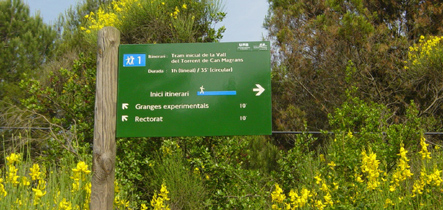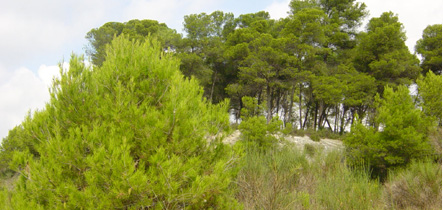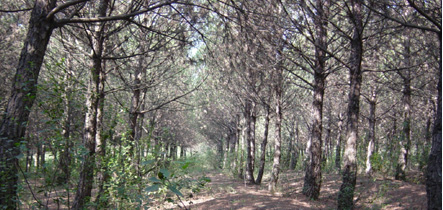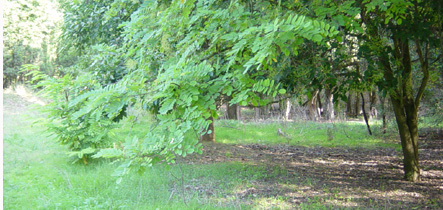Blue Itinerary-Can Magrans
Can Magrans

In 1998 two nature trails were designed on the Bellaterra Campus: The Can Magrans trail and the Can Domènec trail. These trails take us to the most singular parts of the campus, where we can find the animal and plant species that are most typical of the area. Both trails are marked from beginning to end and take approximately an hour to walk. The aim is to promote the UAB's environmental values and maintain these areas.
The Can Magrans trail (the Blue Trail) goes round the back of the Faculty of Veterinary Medicine. The trail mainly skirts crop fields and pinewoods and, on some stretches, holm and other oak woods.
Download the map of the blue trail



Further down the trail are the remains of a 20th century building known as Cal Truita and, around it, some of the plants that were grown in what must have been its garden (cypresses, a palm tree, century plants and firs) and crop fields (olive, almond and kaki trees).
In the most anthropised environments there are a large number of rodents: house mice, field mice and squirrels.